Ski bindings are the unsung heroes of your skiing setup. They secure your boots to your skis, translating movement into performance while prioritizing safety by releasing during falls. Picking the right bindings is crucial, especially for short skis or skates like Snowfeet*. Here’s a quick breakdown:
- Traditional Bindings: Require specific ski boots, offer precision, and include safety release mechanisms. Examples include Alpine, Touring, GripWalk, and Tech bindings.
- Snowfeet* Bindings: Work with winter shoes, snowboard boots, or ski boots. They’re lightweight, portable, and easy to adjust, perfect for short skis and skates.
Snowfeet* bindings simplify skiing. They’re compatible with everyday footwear, fit in a backpack, and are beginner-friendly, making winter sports more accessible. Whether you’re carving slopes or trying tricks, they’re designed for fun and convenience. Let’s dive into the details of how they compare and how to choose the right setup for you.
Ski Binding Basics - Alpine vs. Frame vs. Tech Ski Bindings
Types of Ski Bindings: Standard vs Modern Options
Ski bindings have come a long way over the years. Traditional systems were built with specific skiing styles in mind, while newer options, like Snowfeet*, are shaking things up with a more flexible approach. Understanding these differences can help you pick the right setup for your skiing style and goals. Let’s dive into the details.
Standard Bindings: Alpine, GripWalk, Touring, and Tech (Pin)
Alpine bindings are the go-to choice for groomed slopes. They’re built for precision and power transfer, making them ideal for downhill skiing on packed or challenging terrain. These bindings use DIN settings (a measure of release force) to ensure safety by releasing the boot during a fall. The downside? They require specialized alpine ski boots, which limits their adaptability.
Touring bindings are perfect for backcountry adventures. They’re designed to handle both uphill climbs and downhill descents. With a free-heel mode for uphill skinning and a locked mode for descents, they’re versatile for off-piste exploration. However, like alpine bindings, they demand specific touring boots.
GripWalk bindings strike a balance between performance and convenience. Introduced by Marker in 2016, they focus on better boot sole compatibility, offering more grip and easier walking compared to traditional alpine soles. This makes navigating icy parking lots or lodge areas a breeze. Still, they tie you to a specific boot system.
Tech (pin) bindings are a favorite among backcountry skiers who value lightweight gear. These bindings use metal pins to secure the boot, providing a strong connection while keeping weight to a minimum. They’re great for efficient ascents but, again, require compatible boots.
The common thread? Each of these systems demands specialized boots, which can limit your options.
Snowfeet* Bindings: Multi-Boot Compatibility
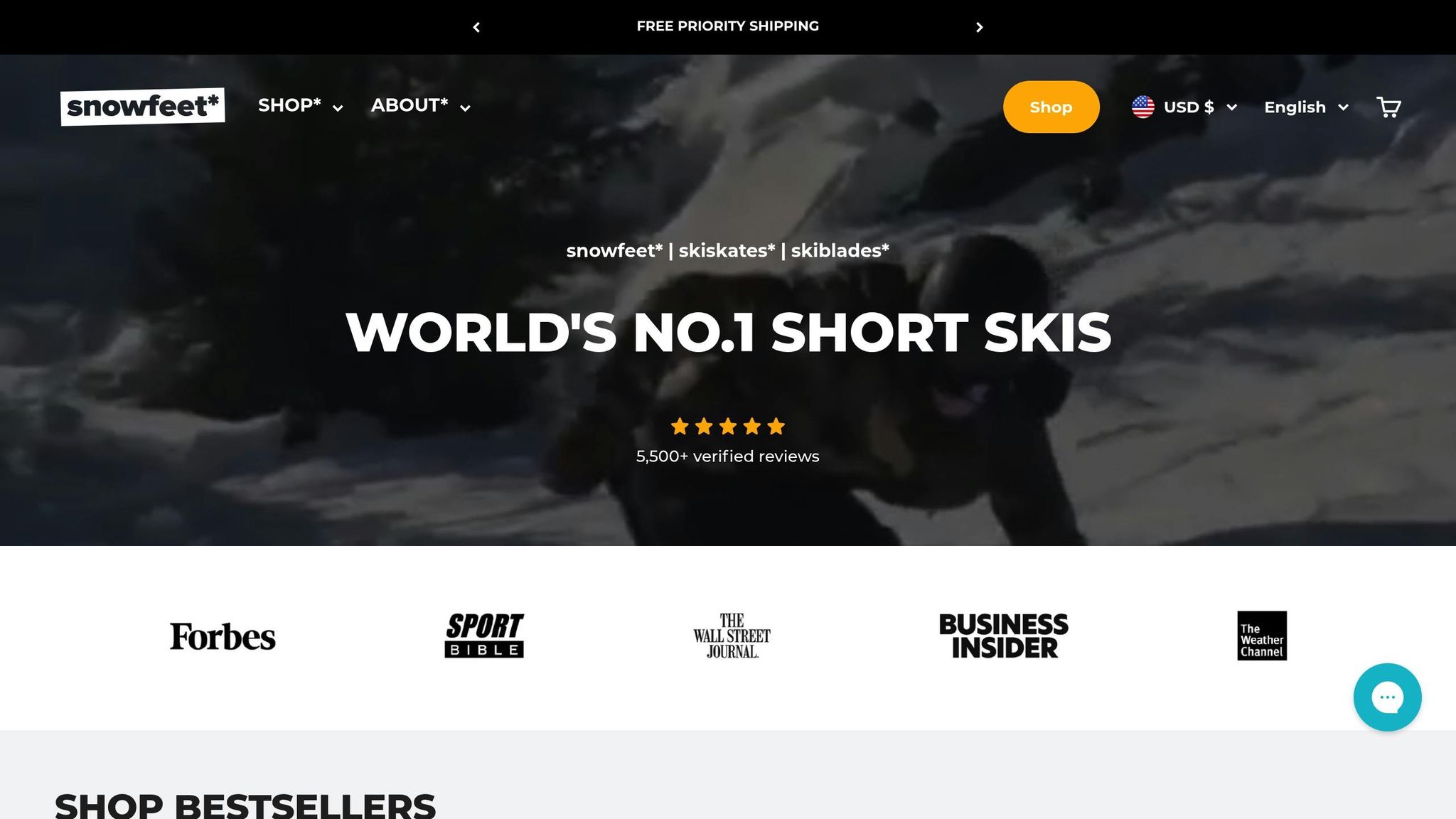
Snowfeet* bindings take a different approach, breaking away from the traditional boot-binding limitations. These bindings work with a variety of footwear, including winter boots, snowboard boots, and even ski boots. This means you’re no longer locked into a specific type of ski boot.
Here’s why that’s a game-changer: you can hit the slopes in comfy snowboard boots for added flexibility or just throw on your regular winter shoes for a casual run. Forget about renting heavy alpine boots or lugging around extra gear - it’s a lighter, more practical way to enjoy skiing.
Snowfeet* offers three binding models to suit different needs. The Basic model is great for lighter winter shoes and casual use. The Standard and Pro X models are built for heavier boots and more aggressive skiing. Each model features an anti-slip surface for better grip and can be adjusted at home with a simple screwdriver.
Unlike traditional bindings, Snowfeet* uses non-release bindings for most of its products. While these don’t release your boot during a fall, they’re designed for the shorter ski format and the unique dynamics of Snowfeet* products. For snowboarders, Snowfeet* also offers bindings specifically designed for skiboards, blending the comfort of snowboarding with the fun of shorter skis.
This setup isn’t just about convenience - it’s also about portability and safety. Traditional skiers often plan entire trips around their bulky gear from brands like Head or Elan. Snowfeet* users, on the other hand, can pack their gear into a backpack and hit the slopes whenever the mood strikes. The ability to use footwear you already own removes a major barrier to entry, making skiing more accessible.
Snowfeet* bindings perform well across a variety of terrains and styles. Whether you’re carving groomed runs, exploring backcountry trails, or even skiing in your backyard, the same setup works seamlessly. Traditional systems just can’t match this level of flexibility - they’re built for specific conditions and require dedicated boots. Snowfeet* changes the game by offering a simpler, more adaptable way to enjoy the slopes.
How to Choose the Right Bindings for Short Skis and Skates
Picking the right Snowfeet* bindings is key to ensuring your boots fit well and your time on the slopes is both safe and enjoyable.
Step-by-Step Guide to Selecting Bindings for Snowfeet*
Start by identifying your Snowfeet* model. Each one has specific binding needs. For example:
- Skiblades 120 cm: These require ski boots only.
- Skiblades 65 cm and Skiblades 99 cm: These work with both ski boots and snowboard boots.
- Skiskates (44 cm): Compatible with both ski and snowboard boots.
- Original Snowfeet*, Snowfeet* Pro, and Snowfeet* Kids models: Designed to work with a variety of boots.
Next, consider your boot preference. Ski boots give you a more aggressive, performance-driven ride, while snowboard boots offer a relaxed, flexible feel. Many people who find ski boots uncomfortable lean toward snowboard bindings for a more laid-back experience.
Think about how you plan to use your Snowfeet*. If you're aiming for lightweight performance on short skiboards, non-release ski boot bindings are a solid choice. On the other hand, if you’re into tricks and maneuvers, snowboard bindings will give you the mobility you need.
Choose a binding model based on your boot size and performance needs. Snowfeet* offers options like Basic, Standard, or Pro X bindings.
Don’t forget to factor in your skill level. Beginners should look for bindings with lower DIN settings for easier release, while more experienced riders might prefer bindings geared for high performance. Snowfeet* bindings are designed to be user-friendly, making them a great option for those who want to skip the steep learning curve often associated with traditional ski brands like Rossignol or Atomic.
Finally, think about versatility. Snowfeet* stand out because they’re not just for ski slopes. You can use them on hiking trails, sledding hills, and other spots where regular skis might not work as well. As Snowfeetstore.com notes:
"Most of the ski resorts allow Snowfeet* and similar 'short skis' on their slopes...And don't forget the great thing about Snowfeet* is that you can always use them in so many other places, like hiking trails and sledding hills." – Snowfeetstore.com
This adaptability means your binding choice should support both planned trips and spontaneous adventures.
Comparison: Snowfeet* vs Standard Ski Bindings
Here’s how Snowfeet* bindings stack up against traditional ski bindings:
- Boot Compatibility: Snowfeet* bindings work with winter shoes, snowboard boots, or ski boots. Traditional bindings, however, require specialized ski boots, which are often less comfortable.
- Portability: Snowfeet* products are lightweight and compact enough to fit in a backpack, making them perfect for impromptu outings.
- Safety and Maintenance: Traditional bindings rely on release mechanisms for safety, which can be complex to maintain. Snowfeet* bindings, on the other hand, are simpler, lighter, and reduce injury risks.
- Performance: Traditional bindings focus on power transfer and precision, especially on groomed runs. Snowfeet* bindings prioritize flexibility and are great for tricks. As one user shared:
"Snowboard bindings give you more flexibility while performing all kinds of tricks, they're super comfortable and you can walk with them anywhere without a problem, which makes the ski trip much more pleasant experience." – Snowfeetstore.com
- Cost and Maintenance: Traditional bindings often require professional adjustments and frequent upkeep. Snowfeet* bindings can be adjusted at home with basic tools, and you won’t need to invest in pricey ski boots.
Another big plus? The learning curve is much easier with Snowfeet*. While traditional ski bindings often demand lessons and hours of practice, Snowfeet* are intuitive and beginner-friendly, making them a hit with families and first-timers.
sbb-itb-17ade95
Adjusting and Maintaining Your Ski Bindings
Once you understand the differences between binding types, the next step is getting them set up correctly. Proper adjustment and regular upkeep of your bindings are key to staying safe and performing well on the slopes. With Snowfeet* products, this process is far easier compared to traditional ski gear from brands like Rossignol or Atomic.
Getting the Adjustment Right for Safety
Snowfeet* bindings are built to be super easy to use. As the company puts it:
"Snowfeet binding are more user-friendly: you can easily adjust them on your own. Plus, you don't need to worry about the sizing: they fit everybody!"
This simplicity is a big plus compared to standard ski bindings, which often involve professional tweaking and complex DIN calculations based on your weight, height, age, and skill level.
Here’s how to adjust different types of Snowfeet* bindings:
-
Non-release bindings on Snowfeet* Skiblades or Skiskates:
- Unlock the safety buttons in the center of the binding.
- Slide the rear bracket to meet your heel and lock it in place.
- Secure the front toe clip and attach the safety leash.
-
Snowboard boot bindings:
- Adjust the toe and ankle straps to fit your boot snugly. Your boot should stay firm without wobbling.
-
Release bindings on longer Skiblades:
- For these, it’s best to visit a professional to get the DIN settings calibrated to match your weight and skiing style.
Keeping Your Snowfeet* Bindings in Top Shape
The good news? Snowfeet* bindings don’t need much maintenance. Their compact design means you can handle most of the upkeep at home with just basic tools.
- After every use, clean off dirt, snow, and debris to keep everything working smoothly.
- Dry the edges to prevent rust, and apply a bit of oil before storing them.
- Sharpen dull edges when needed, and regularly wax the base to boost glide and stop snow from sticking.
- Use a screwdriver to check and adjust your bindings periodically to ensure they fit perfectly.
What’s great about Snowfeet* is that their bindings are designed for easy DIY adjustments. This is a huge advantage over traditional gear from brands like Head or Elan, which often need costly professional servicing. With just a little care, your Snowfeet* bindings will be ready for all your winter adventures.
Snowfeet* vs Standard Ski and Snowboard Brands
Once you've got the hang of adjusting and caring for your gear, let's dive into how Snowfeet* stacks up against traditional ski and snowboard brands. Big names like Rossignol, Atomic, Elan, and Head are known for their heavy-duty setups - long skis, alpine boots, and complex systems. Snowfeet*, however, takes a completely different route with its lightweight and user-friendly design.
Performance, Portability, and Ease of Use
Traditional ski bindings are tailored to specific alpine ski boots, and they usually require professional installation and upkeep. Snowfeet* skips all that. It works seamlessly with winter or snowboard boots, so there’s no need to invest in extra ski boots. Plus, the Snowfeet* Mini Ski Skates tip the scales at just 3.3 lbs (1.5 kg), making them much lighter than the traditional ski setups.
That lightweight design isn’t just about comfort - it’s about convenience. Snowfeet* fits neatly into a backpack, so you can take them to slopes, trails, or even your backyard. Compare that to traditional skis, which often need roof racks and ski bags, limiting you to resort slopes. Snowfeet* opens up a whole new world, from narrow hiking trails to snow parks and cross-country paths.
Learning to use Snowfeet* is also a breeze. Traditional skiing often takes lessons and years of practice to feel confident. Snowfeet* flips the script with its motto: "Long enough to ski, short enough to skate. Easy to Learn and Use. Strap in and ride – no lessons needed." And with over 5,500 verified reviews averaging 4.9 out of 5, it’s clear that this simplicity resonates with users.
Here’s a quick look at how Snowfeet* compares to traditional gear:
Comparison Table: Key Benefits
| Feature | Snowfeet* | Traditional Brands (Rossignol, Atomic, Head, Elan) |
|---|---|---|
| Boot Compatibility | Winter boots, snowboard boots | Alpine ski boots only |
| Weight | 3.3 lbs (1.5 kg) total | Much heavier |
| Portability | Fits in a backpack | Requires ski bags and roof racks |
| Terrain Options | Slopes, trails, backyards, parks | Primarily resort slopes |
| Learning Curve | No lessons needed | Professional instruction recommended |
| Maintenance | DIY adjustments | Requires professional servicing |
The feedback speaks for itself. One customer shared:
"These skiblades are so much fun and easy to control. Never going back to regular skis." – Andrew B.
Traditional ski bindings, like those from Atomic or Head, focus on power transfer, precision, and safety through intricate release mechanisms. While these features are vital for hardcore alpine skiers, they can feel overwhelming for beginners or casual users. Snowfeet*, on the other hand, puts accessibility and fun first, making winter sports less intimidating and more inviting.
And there’s something even bigger brewing here - Snowfeet* isn’t just about gear; it’s about creating a movement. They’re leading the charge in a new winter sport called skiskating, with dreams of it one day hitting the Olympic stage. By shaking up traditional ski norms, Snowfeet* is proving that shorter skis can mean more freedom, more fun, and fewer barriers. Their design philosophy is simple: instead of forcing you to adapt to clunky equipment, Snowfeet* adapts to you. It works with the boots you already own and fits right into your life - whether you’re hitting the slopes or exploring a snowy trail.
Conclusion: Maximizing Safety and Fun with Snowfeet* Bindings
Snowfeet* bindings bring together safety, performance, and pure fun in a way that’s hard to beat. With over 50,000 riders around the world and an impressive 4.9 out of 5 rating from more than 5,500 verified reviews, it’s clear they’ve made their mark in the world of winter sports.
What makes Snowfeet* special? For starters, they simplify the whole winter sports experience. You don’t need professional help to set them up or years of practice to enjoy them. Just strap them on over your winter or snowboard boots, and you’re ready to glide down slopes, cruise trails, or even explore your neighborhood. Their compatibility and portable design make them stand out from traditional gear, opening up winter sports to everyone - whether you’re 5 or 105.
The bindings feature a smart adjustment system that’s easy to use, paired with durable fiberglass-reinforced construction and metal ski edges. This combo ensures better foot positioning, giving you more stability and control without sacrificing safety.
What really makes them shine is how they enhance your natural movement. Thanks to their lightweight and compact design, you’ll experience less fatigue and more freedom to carve, explore, or try out tricks. Riders love them, and the feedback says it all. Nathan F. raved:
"Absolute game-changer! They're light, fast, and incredibly fun to ride."
Whether you’re into Mini Ski Skates, performance Skiskates, or carving Skiblades, Snowfeet* bindings are ready to match your style. They’re versatile, easy to carry, and designed to fit right into your lifestyle. It’s time to pack your backpack and dive into the future of winter sports with Snowfeet*!
FAQs
How do Snowfeet* bindings make winter sports easier and more accessible compared to traditional ski bindings?
Snowfeet* bindings are shaking up the winter sports scene with their lightweight and portable design. Unlike the traditional, often bulky bindings from brands like Rossignol or Atomic that usually need professional installation, Snowfeet* bindings are compact enough to toss in your backpack. Plus, they’re super easy to adjust right at home. This makes them a great pick for beginners, casual skiers, or anyone who wants a stress-free setup.
Their compact size and adaptability make them a perfect match for short skis and skates, such as Snowfeet* Skiblades or Skiskates. They deliver excellent control and comfort on the slopes. Whether you’re low on storage space or need gear that’s easy to travel with, Snowfeet* bindings offer a simple, travel-friendly way to dive into winter sports - all without sacrificing performance or safety.
How do I choose the right Snowfeet* bindings for my skiing style and boots?
When choosing Snowfeet* bindings, think about your skiing style - whether you're sticking to resorts, exploring backcountry trails, or looking for an all-around option. Your experience level and the type of boots you plan to wear also play a big role. Snowfeet* bindings are specially crafted for short skis and skates, working seamlessly with waterproof winter shoes or snowboard boots.
What makes Snowfeet* stand out compared to brands like Rossignol or Atomic? It’s their emphasis on simplicity and versatility. These bindings feature a quick-release design, are lightweight, and adjust easily, giving you excellent control. Perfect for skiers who want a compact, dynamic setup, Snowfeet* bindings perform beautifully on groomed slopes and mixed terrain alike, combining convenience with top-notch performance.
What makes maintaining and adjusting Snowfeet* bindings easier compared to traditional ski bindings, and what are the advantages?
Snowfeet* bindings are all about keeping things simple, which makes them a breeze to maintain and adjust compared to traditional ski bindings. Forget about the hassle of professional tuning or fiddling with DIN settings - Snowfeet* bindings can be adjusted right at home with just a screwdriver. That means no pricey trips to the ski shop and way more convenience for your everyday adventures.
What’s great about Snowfeet* bindings? For starters, maintenance is quicker, they’re super accessible for beginners, and you can tweak the settings yourself to match your needs. This is especially handy for short skis and skates, where easy adjustments and usability are key. With Snowfeet*, you’re looking at a smooth, frustration-free experience that balances safety, control, and affordability - without compromising how they perform on the slopes.







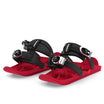
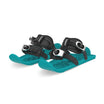












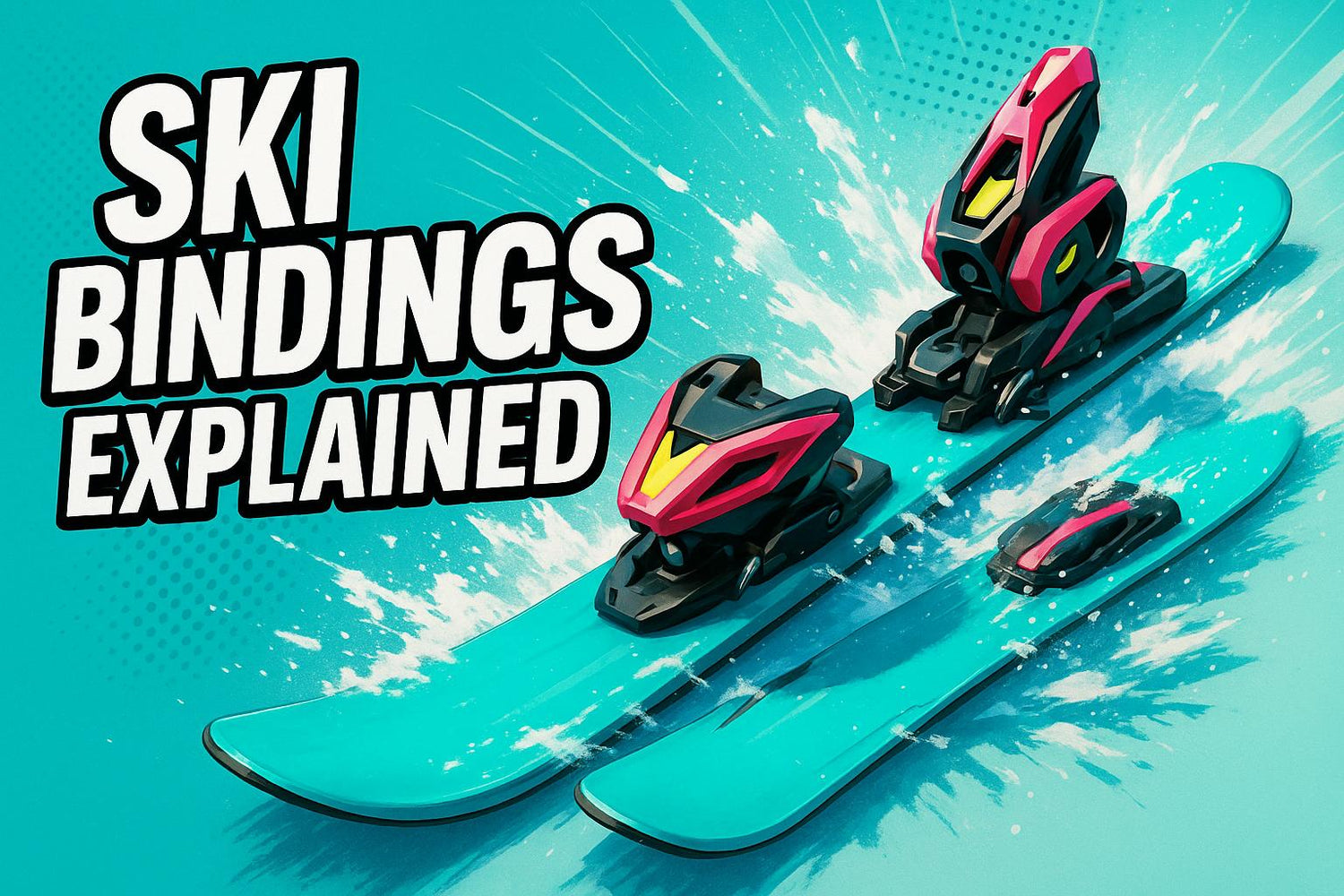
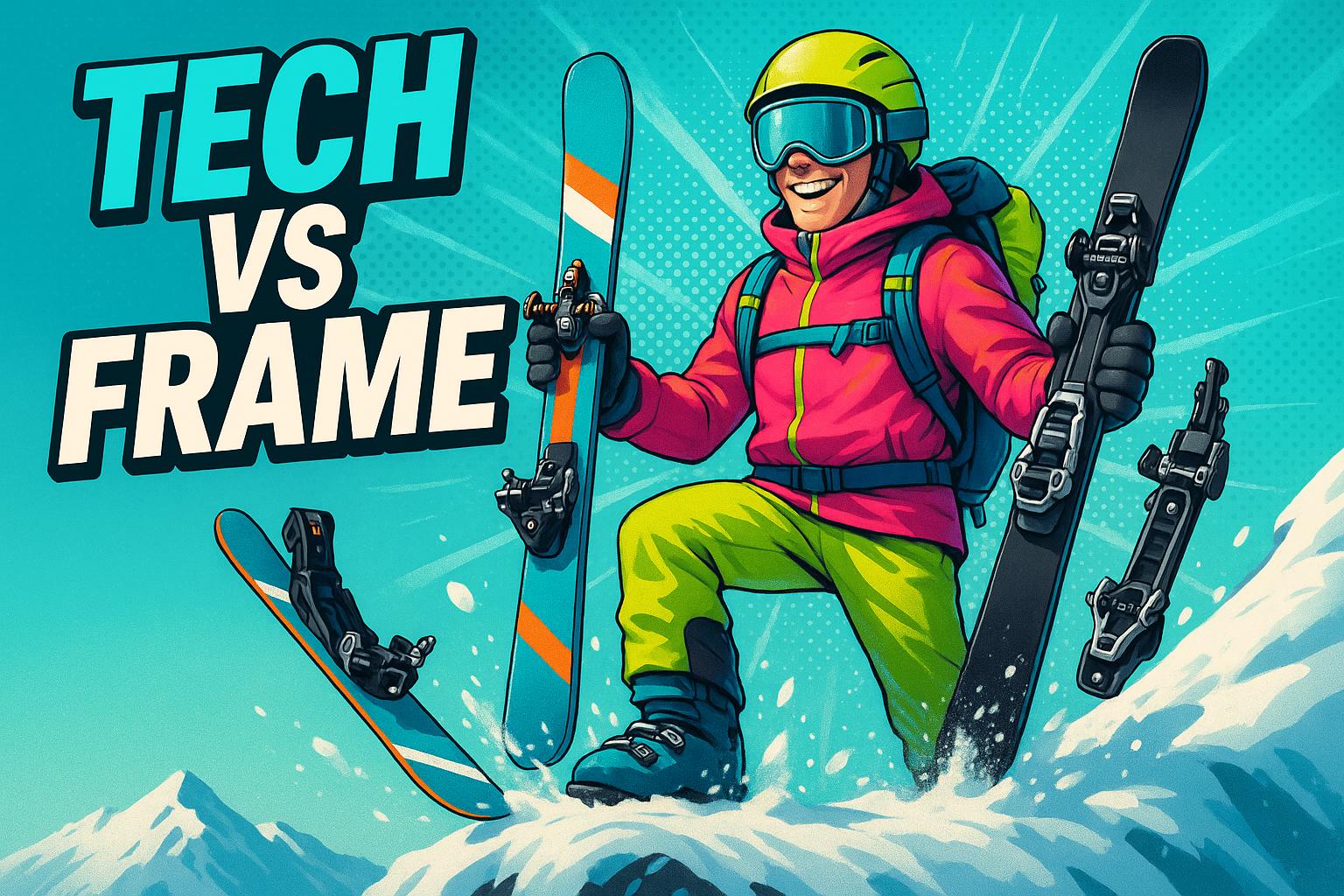
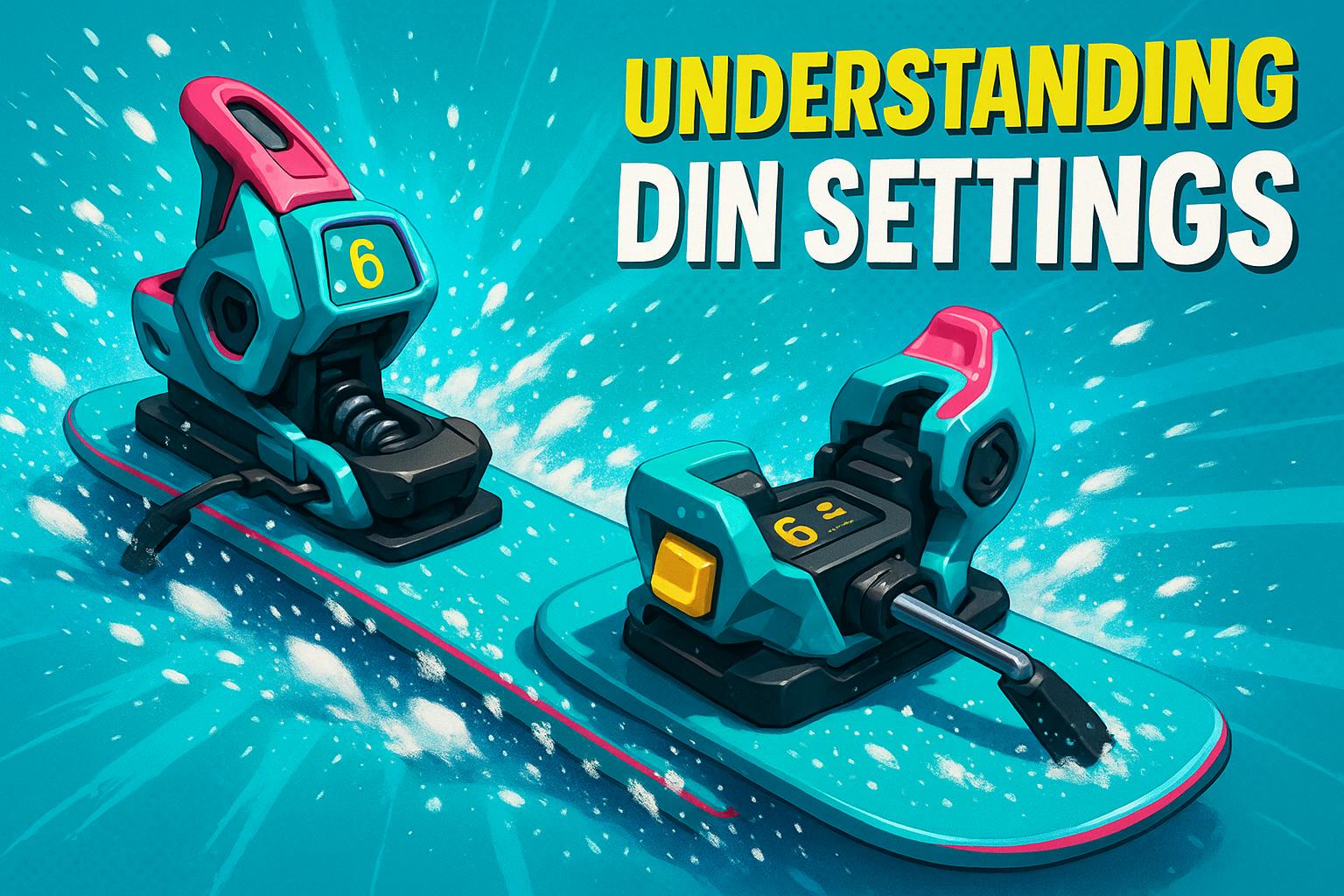




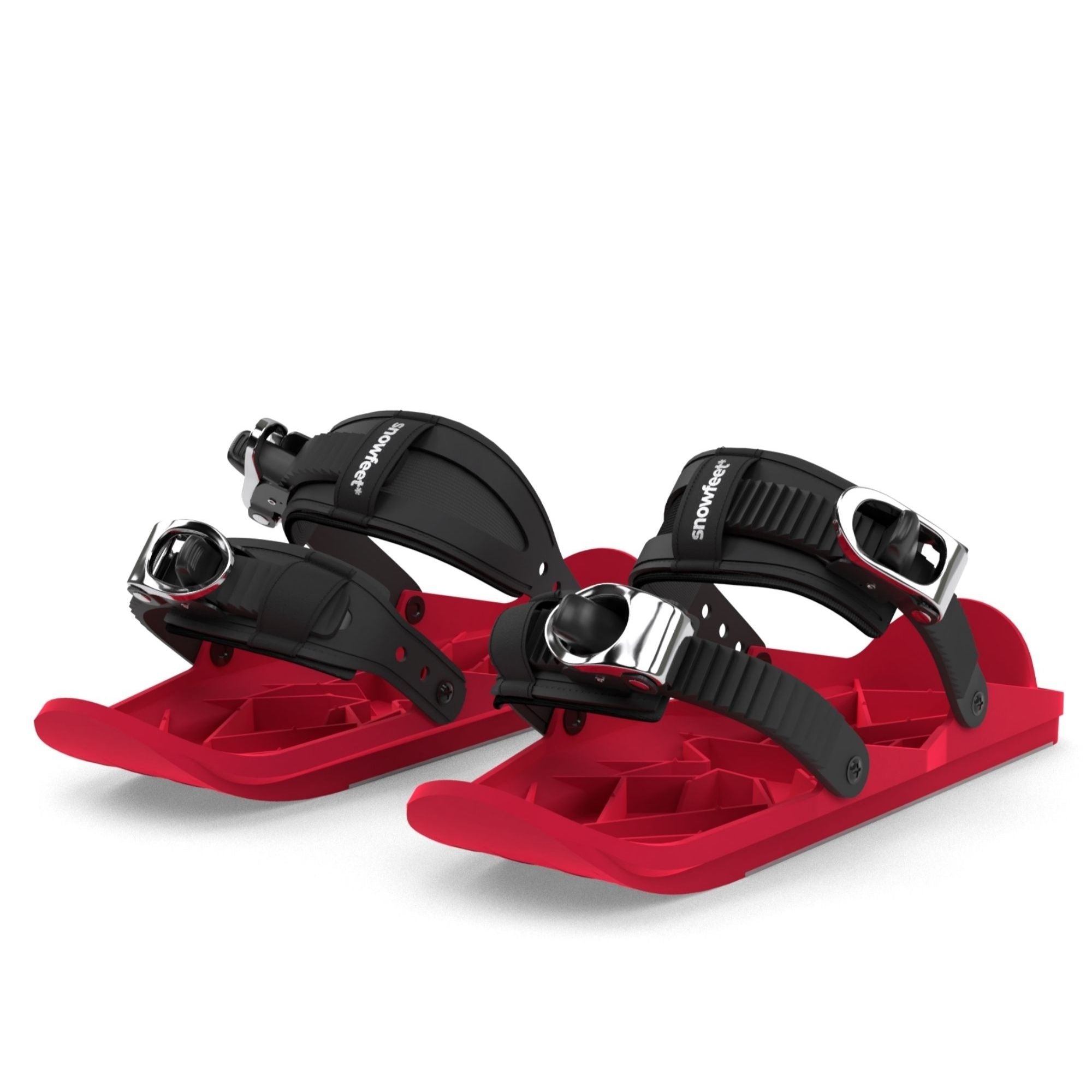
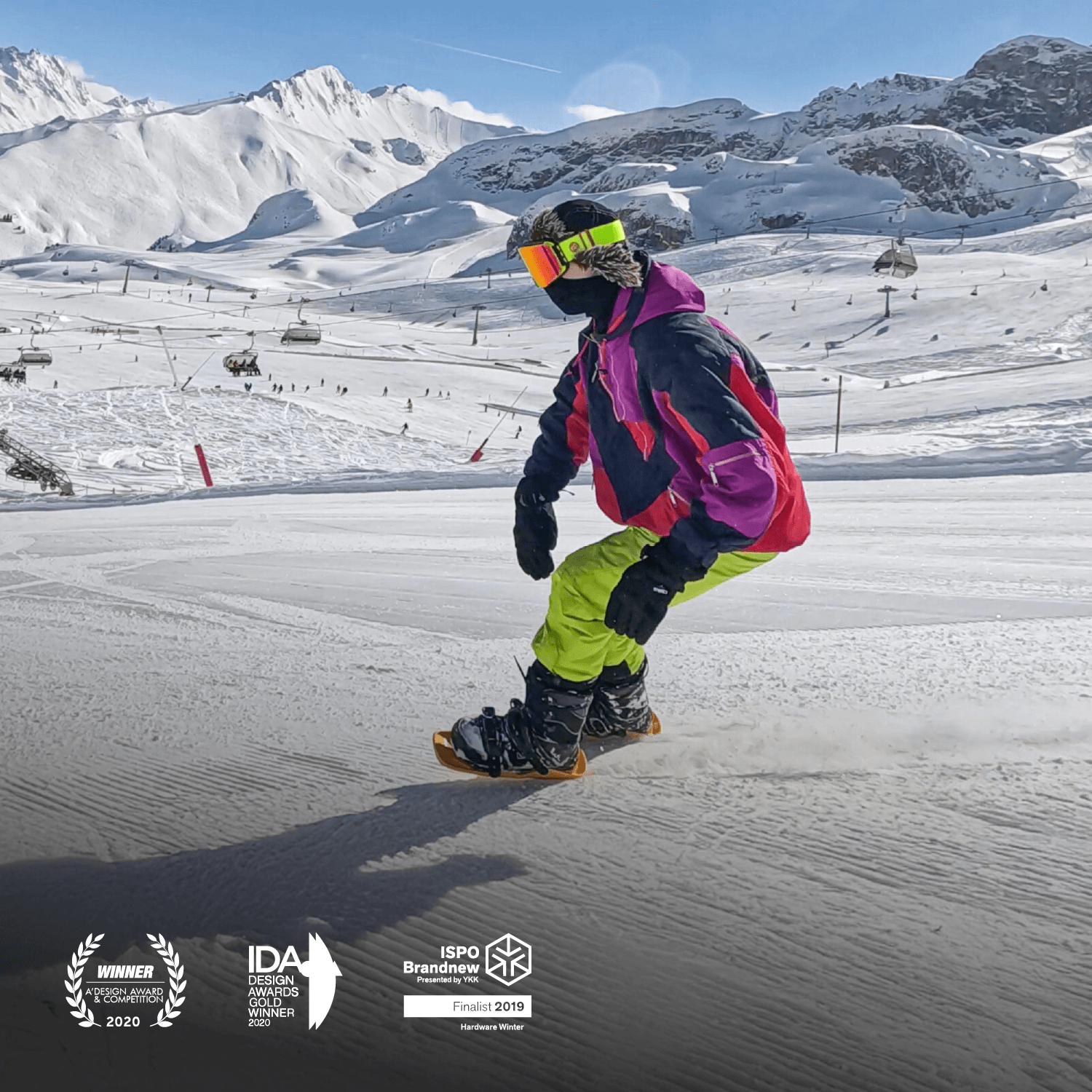




Leave a comment
This site is protected by hCaptcha and the hCaptcha Privacy Policy and Terms of Service apply.